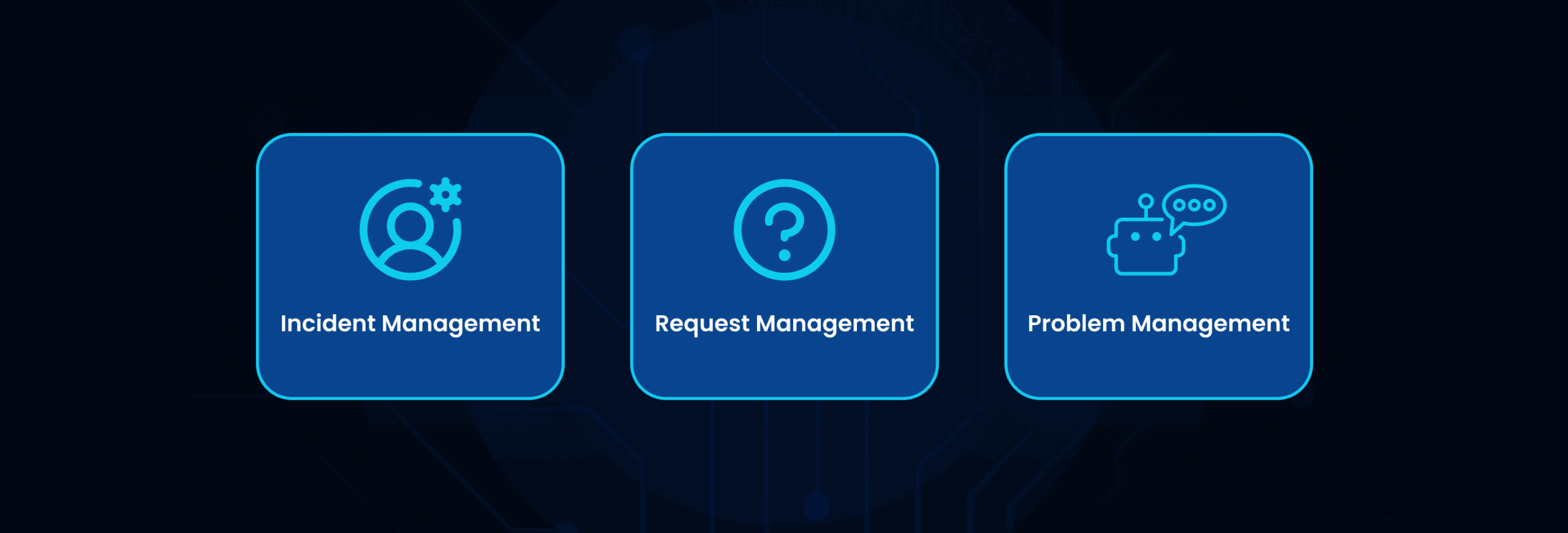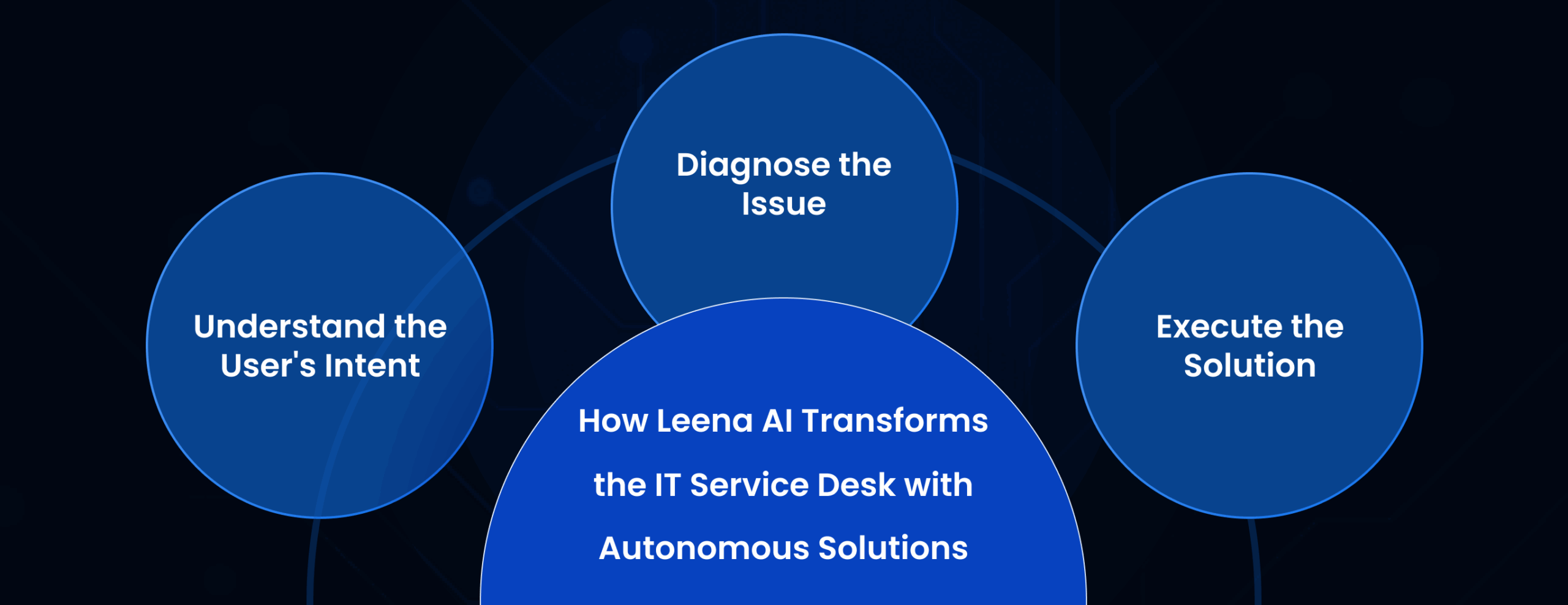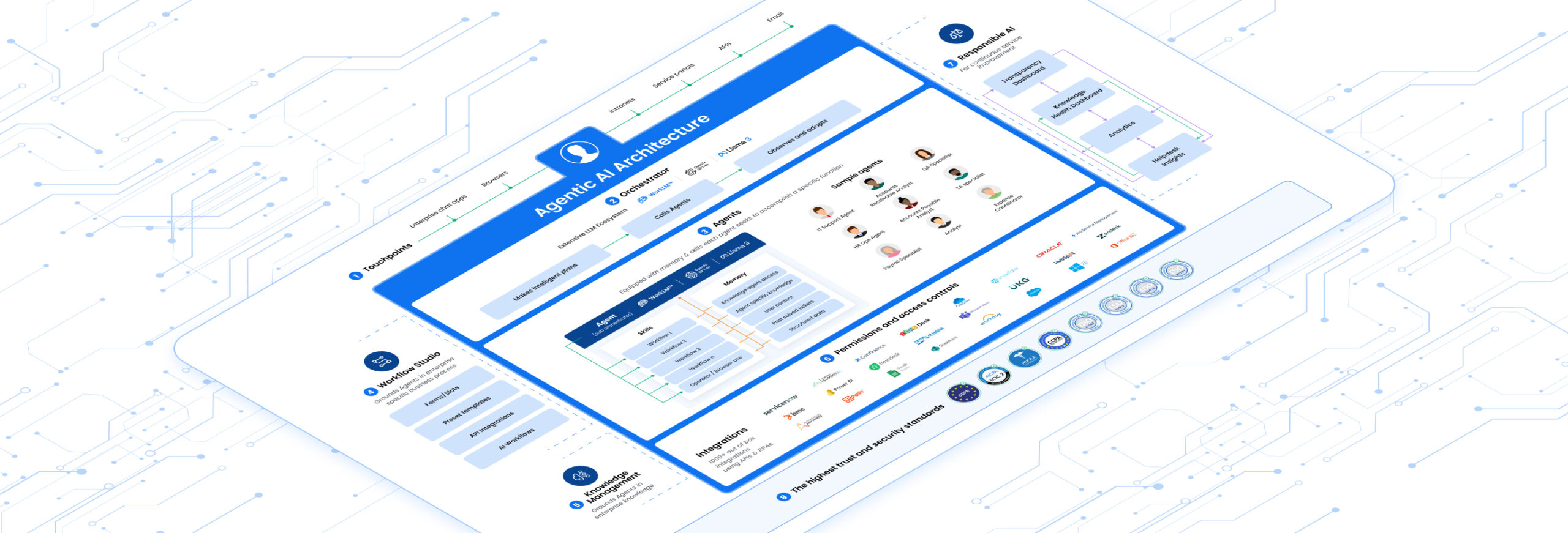Introduction
As a technology leader, you’re not just managing systems; you’re enabling the entire business to move faster, work smarter, and innovate. In this landscape, the traditional view of an IT Service Desk as a simple “fix-it” counter is outdated. Today’s high-performing IT Service Desk is the central nervous system of your technology operations and a powerful engine for employee productivity. It’s the critical touchpoint between your employees and the technology they need to succeed, making its optimization a strategic imperative. This isn’t just about closing tickets faster; it’s about creating a frictionless technology experience that fuels business growth.
What Is an IT Service Desk? A Modern Definition
Think of the classic IT help desk as a walk-up window where you report a single, broken item. In contrast, a modern IT Service Desk is like a full-service concierge for all technology needs. It’s a single, centralized point of contact for employees to get help, request new services, and find information.
More than just a reactive support function, the IT Service Desk is a strategic component aligned with broader business goals. It’s designed not only to restore service when things break but also to proactively manage and improve the technology services offered to the entire organization. In short, while a help desk focuses on fixing today’s problems, a strategic IT Service Desk also focuses on preventing tomorrow’s.
How IT Service Desk Supports Enterprises Beyond Just Fixing Things
A well-run IT Service Desk provides foundational support that reverberates throughout the enterprise. Its value extends far beyond resolving individual computer issues; it becomes a key enabler of your most critical business initiatives.
For instance, when your company rolls out a new enterprise-wide software, the IT Service Desk is on the frontline. It manages access requests, troubleshoots initial user issues, and gathers crucial feedback that can accelerate adoption and maximize the return on that significant investment.
Furthermore, by centralizing all technology interactions, the IT Service Desk gives you a real-time pulse on the health of your entire tech ecosystem. This visibility is invaluable for identifying systemic risks, ensuring business continuity, and making data-driven decisions about future technology investments. Ultimately, a modern IT Service Desk ensures that your technology stack actively supports, rather than hinders, your employees’ ability to get their work done efficiently.
Key IT Service Desk Functions: Incident, Request, and Problem Management
While the scope of an IT Service Desk is broad, its core functions can be understood through three key pillars. Mastering these processes is essential for moving from a reactive to a proactive support model.
- Incident Management: This is the most familiar function. An incident is an unplanned interruption to an IT service or a reduction in its quality. For example, when a server goes down or an employee can’t access their email, the goal of incident management is to restore normal service as quickly as possible to minimize business impact. It’s about immediate resolution.
- Request Management (or Request Fulfillment): This process handles predefined, pre-approved service requests from employees. This includes things like requesting a new laptop, getting access to a software application, or a simple password reset. The key here is to have a standardized, efficient, and often automated process to fulfill these requests quickly and consistently.
- Problem Management: This is where the IT Service Desk becomes truly strategic. A problem is the underlying cause of one or more incidents. For example, if dozens of employees report that the Wi-Fi is dropping every afternoon (multiple incidents), problem management is the process of investigating why it’s happening and implementing a permanent fix, like replacing a faulty network switch. This function prevents future incidents, saving countless hours of lost productivity.

Benefits of an IT Service Desk for IT Operations and Employee Productivity
Implementing a strategic IT Service Desk delivers tangible benefits that directly impact both your IT team’s effectiveness and your employees’ daily experience. The positive effects create a virtuous cycle of improvement across the organization.
For IT Operations:
- Centralized Control and Visibility: It provides a single source of truth for all IT support activities, enabling better tracking, management, and reporting.
- Improved Efficiency: Standardized processes reduce wasted effort and allow the IT team to resolve issues more quickly and effectively.
- Data-Driven Insights: The data collected by the IT Service Desk reveals trends and recurring problems, enabling proactive fixes and better resource allocation.
For Employee Productivity:
- Single Point of Contact: Employees know exactly where to go for any tech-related issue, eliminating confusion and frustration.
- Faster Resolution Times: With clear processes and priorities, issues are resolved more quickly, minimizing downtime and keeping employees productive.
- Enhanced Employee Experience: A responsive and helpful IT Service Desk makes employees feel supported and valued, contributing to higher job satisfaction and engagement.
How AI and Automation Are Enhancing IT Service Desk Efficiency
For years, the promise of automation in the IT Service Desk was limited to simple ticket routing or basic chatbots. Today, artificial intelligence has fundamentally changed the game. This evolution is key to scaling support without scaling headcount.
AI-powered solutions can now handle a significant portion of routine tasks with incredible speed and accuracy. Think about password resets, software access requests, or basic troubleshooting steps, these high-volume, low-complexity tasks can be fully automated.
This automation does two crucial things. First, it provides employees with instant, 24/7 resolutions for their most common issues, dramatically improving their experience. Second, it liberates your skilled IT professionals from repetitive work. Consequently, they can focus on high-impact activities like problem management, cybersecurity threat analysis, and supporting strategic technology projects. The modern IT Service Desk uses AI not to replace humans, but to elevate them.
Trends in IT Service Desk: Predictive Support and Agentic AI
As we look ahead, two transformative trends are defining the future of the IT Service Desk: predictive support and Agentic AI. These concepts represent the shift from a reactive model to one that is truly autonomous.
Predictive Support is about solving problems before they even happen. By using AI to analyze vast amounts of data from laptops, servers, and applications (a practice often called AIOps), the system can detect subtle patterns that signal an impending failure. For instance, it might notice a server’s memory usage is trending dangerously high and automatically allocate more resources or create a proactive ticket for an analyst to investigate before the server crashes and disrupts business.
Agentic AI is the next leap forward. While traditional automation follows a predefined script, an AI Agent acts more like a human team member. It can understand a complex goal, reason through the steps needed to achieve it, use various tools, and execute a multi-step plan autonomously. Instead of just identifying a problem, an AI Agent can diagnose the root cause, decide on the best solution, and implement the fix, all without human intervention. This is the future of a truly autonomous IT Service Desk.
How Leena AI Transforms the IT Service Desk with Autonomous Solutions
At Leena AI, we are at the forefront of this evolution with our pioneering work in Agentic AI for IT. We build autonomous AI Agents that function as digital team members, designed to resolve complex enterprise support issues from end to end.
Our approach moves beyond simple chatbots and workflow automation. When an employee has an issue, like their VPN not connecting or needing access to a restricted database, our AI Agent doesn’t just create a ticket. It takes ownership of the issue.
For example, the Leena AI Agent can:
- Understand the User’s Intent: It engages in a natural conversation to grasp the full context of the problem.
- Diagnose the Issue: It securely integrates with your backend systems (like Active Directory, network monitoring tools, or cloud platforms) to run diagnostics.
- Execute the Solution: It autonomously performs the necessary actions, such as resetting credentials, running network troubleshooting scripts, provisioning software licenses, or escalating to a human expert with a complete diagnostic summary.
By deploying these AI Agents, we help enterprises transform their IT Service Desk into a fully autonomous, highly efficient organization. This results in dramatically lower resolution times, significant operational cost savings, and an unparalleled technology experience for your employees, allowing your human IT talent to focus on driving innovation.

Frequently Asked Questions (FAQs)
1. What's the main difference between an IT help desk and an IT service desk?
An IT help desk is typically reactive and focused on fixing immediate technical problems (incident management). An IT Service Desk is more strategic, encompassing the help desk function while also managing service requests, handling problem management, and aligning with overall business objectives.
2. How does an IT service desk improve business continuity?
By centralizing incident and problem management, an IT Service Desk can quickly identify and resolve large-scale issues that could disrupt business operations. Its proactive problem management function helps prevent major outages, ensuring that critical systems remain available.
3. Can an IT service desk handle non-IT issues?
Yes. When the principles and platform of an IT Service Desk are applied to other departments like HR, Finance, or Facilities, it’s known as Enterprise Service Management (ESM). This creates a single, unified service experience for all employee needs.
4. What are the key metrics for measuring IT service desk performance?
Key metrics include First-Contact Resolution (FCR), Average Time to Resolution, Ticket Volume Trends, and Customer Satisfaction (CSAT) scores. More advanced metrics also measure the business impact, such as the reduction in employee downtime.
5. How does Agentic AI differ from a simple chatbot on an IT service desk?
A simple chatbot follows a script and can answer basic questions or create a ticket. Agentic AI, on the other hand, can reason, plan, and execute multi-step tasks. It can autonomously diagnose a problem, interact with other systems, and implement a solution without human intervention, effectively acting as a digital IT engineer.
6. Is it difficult to integrate an AI-powered IT service desk with existing systems?
Modern AI solutions like Leena AI are designed for seamless integration. They use pre-built connectors and APIs to securely connect with popular enterprise systems like ServiceNow, Jira, Microsoft 365, and Workday, ensuring a smooth implementation process.
7. What is the primary goal of a modern IT Service Desk?
The primary goal of a modern IT Service Desk is to provide a seamless and efficient technology experience for all employees, ensuring that technology acts as an enabler, not a barrier, to business productivity and innovation.













